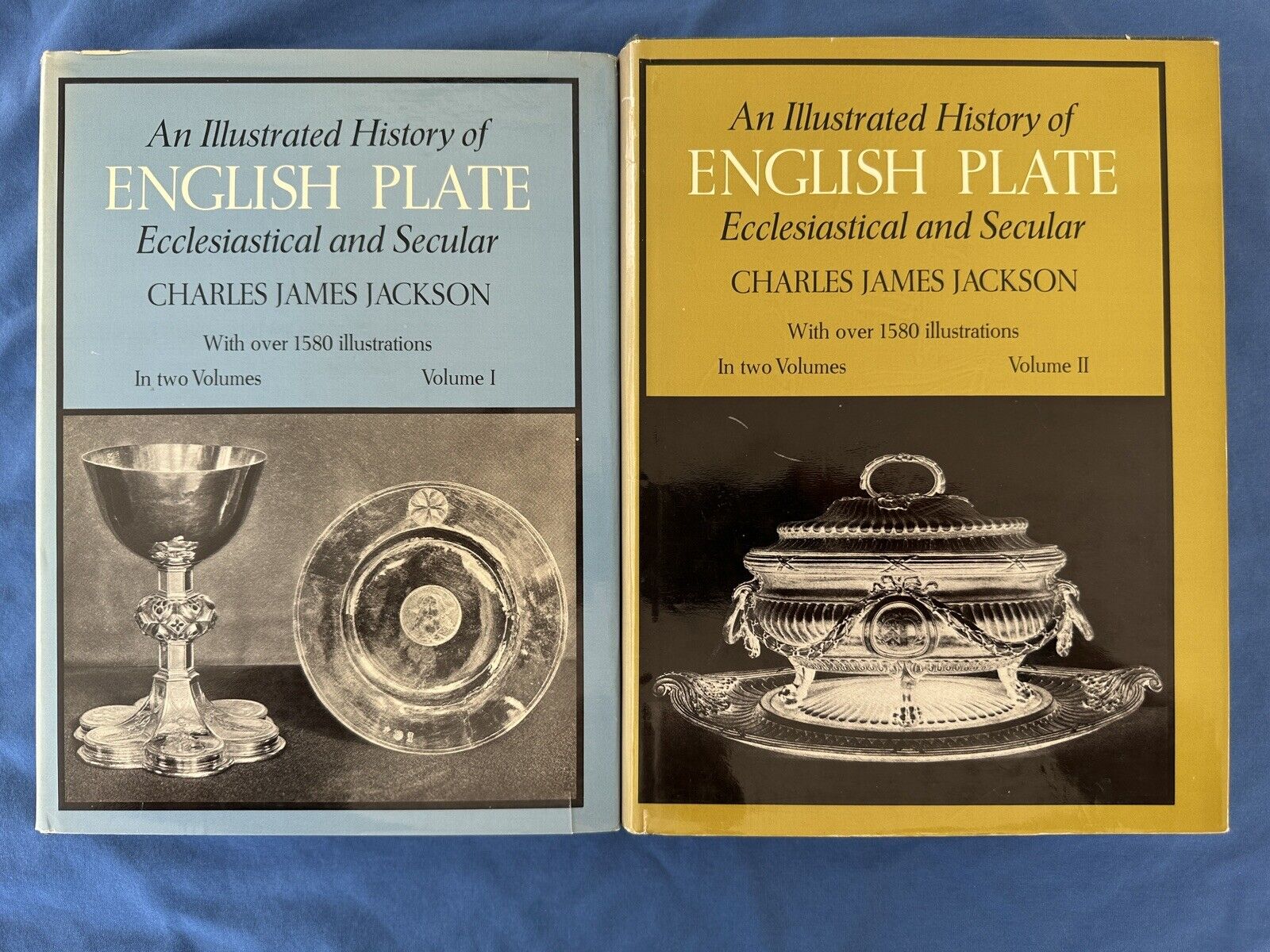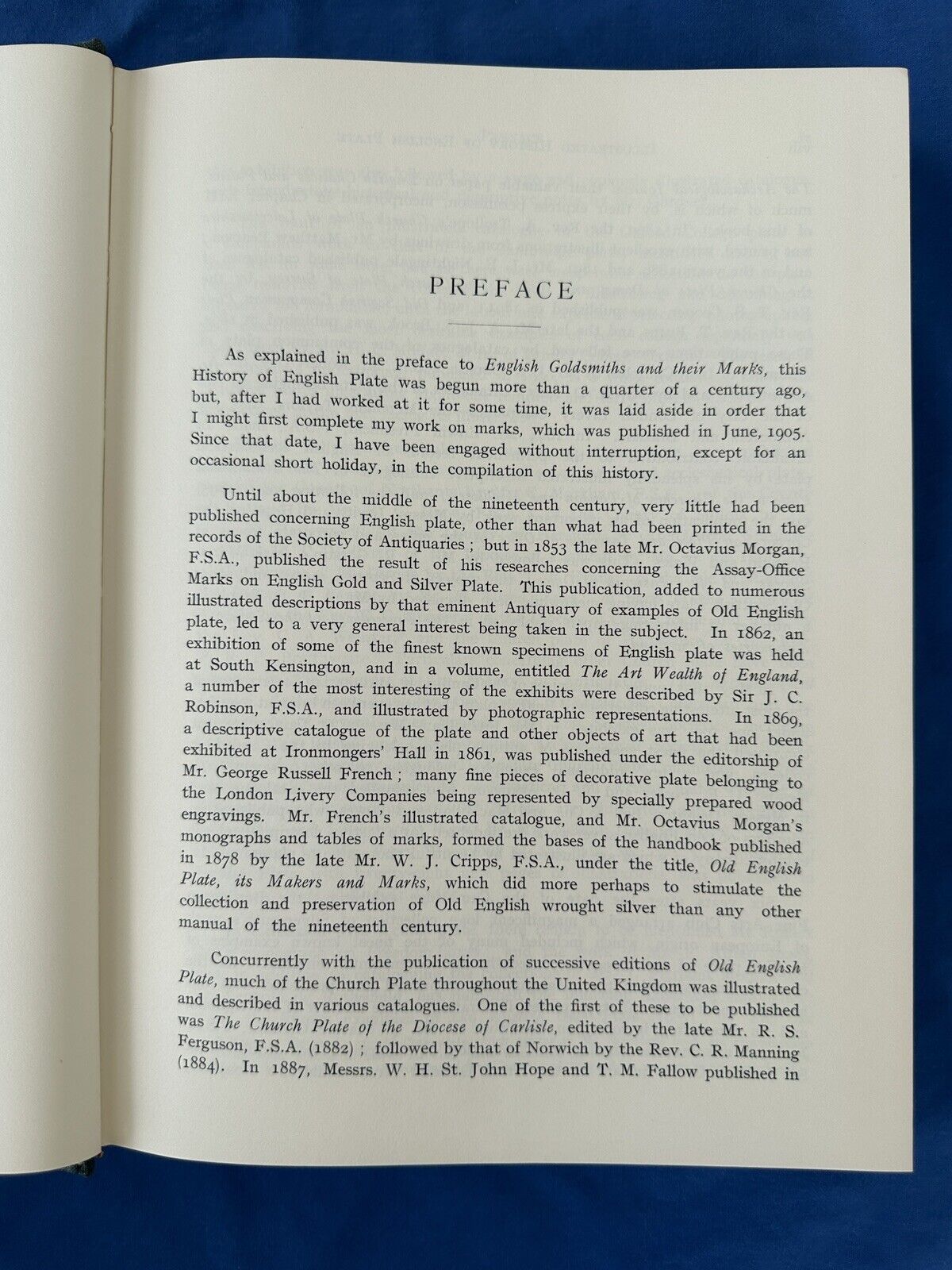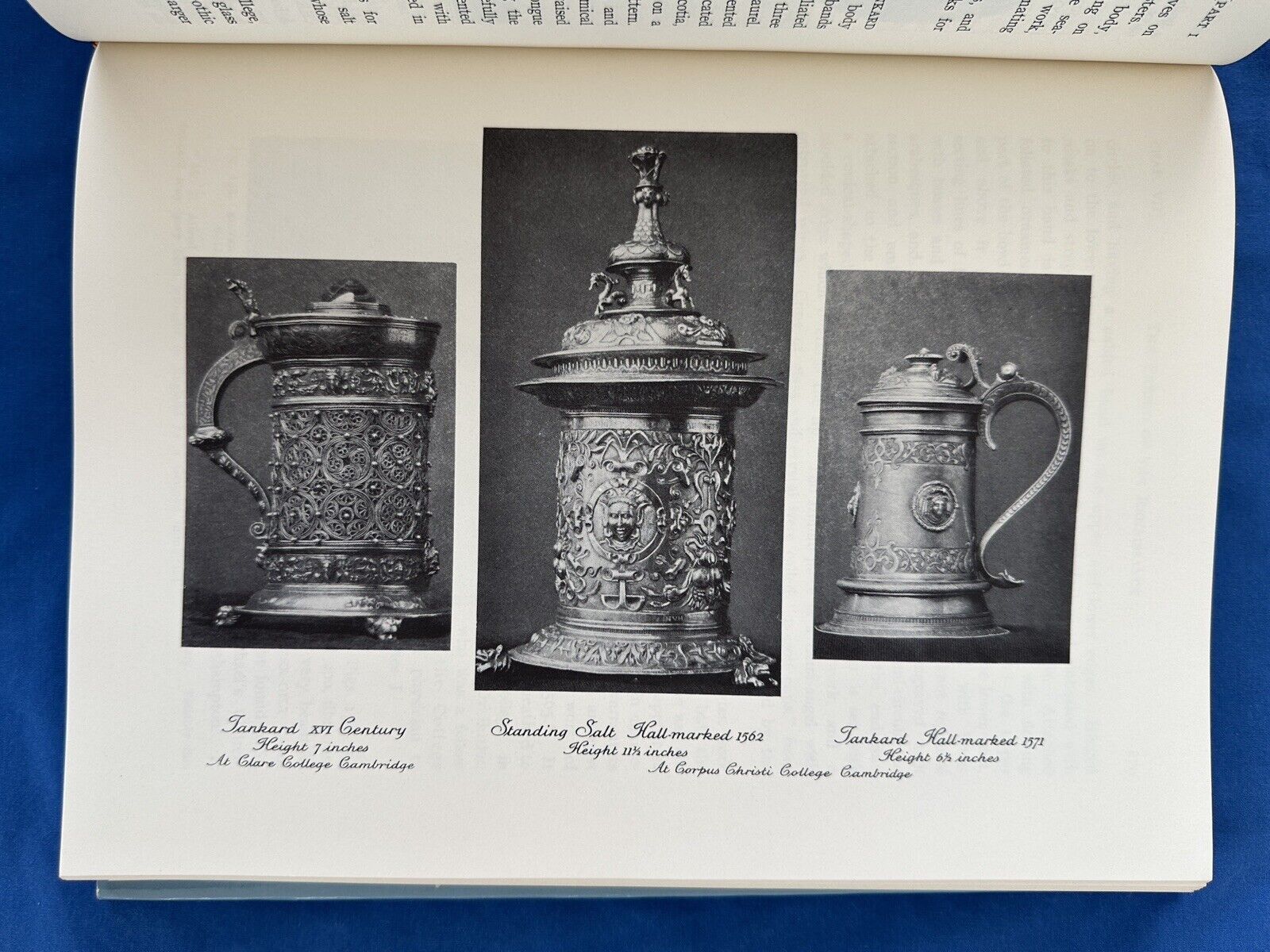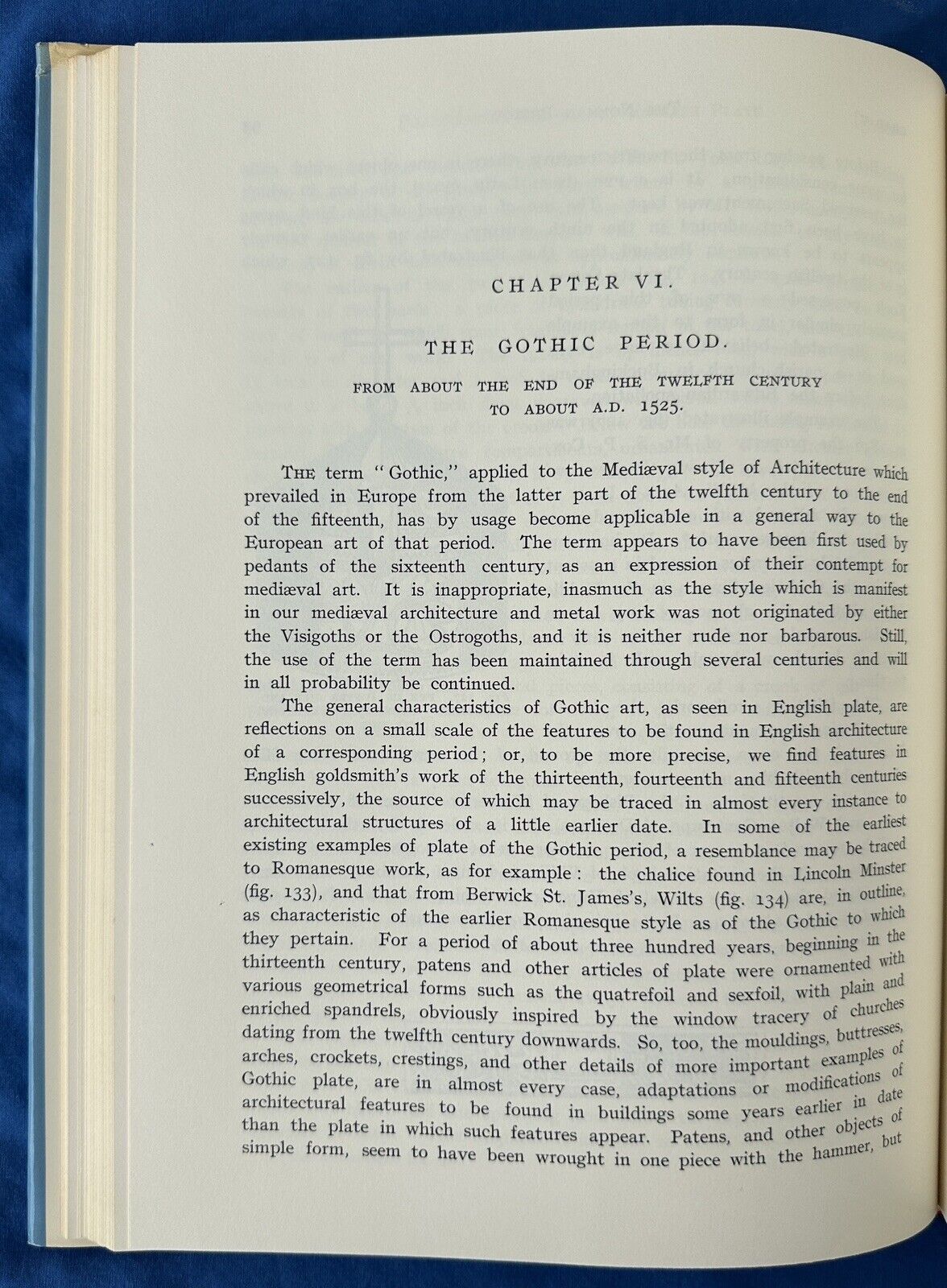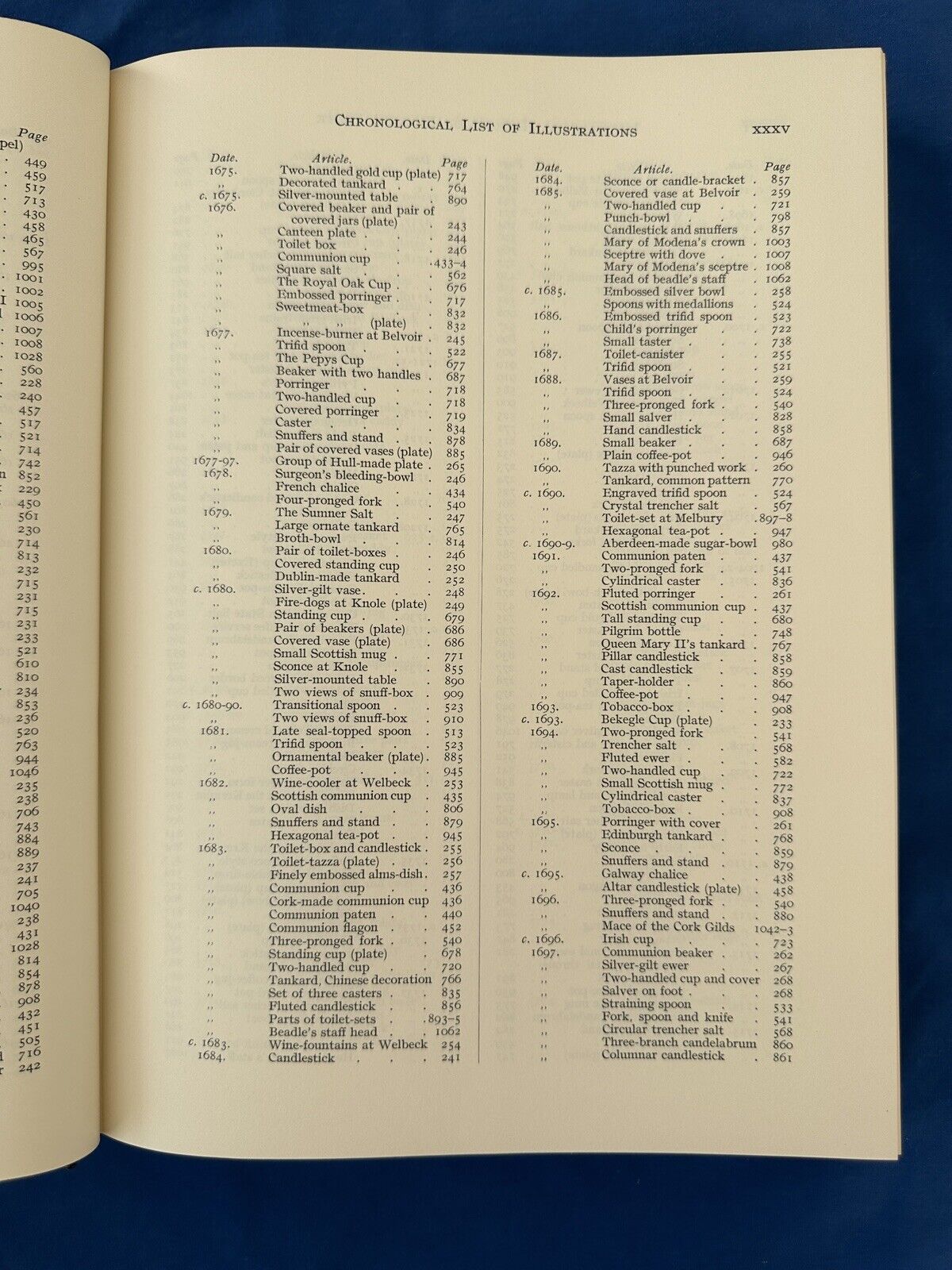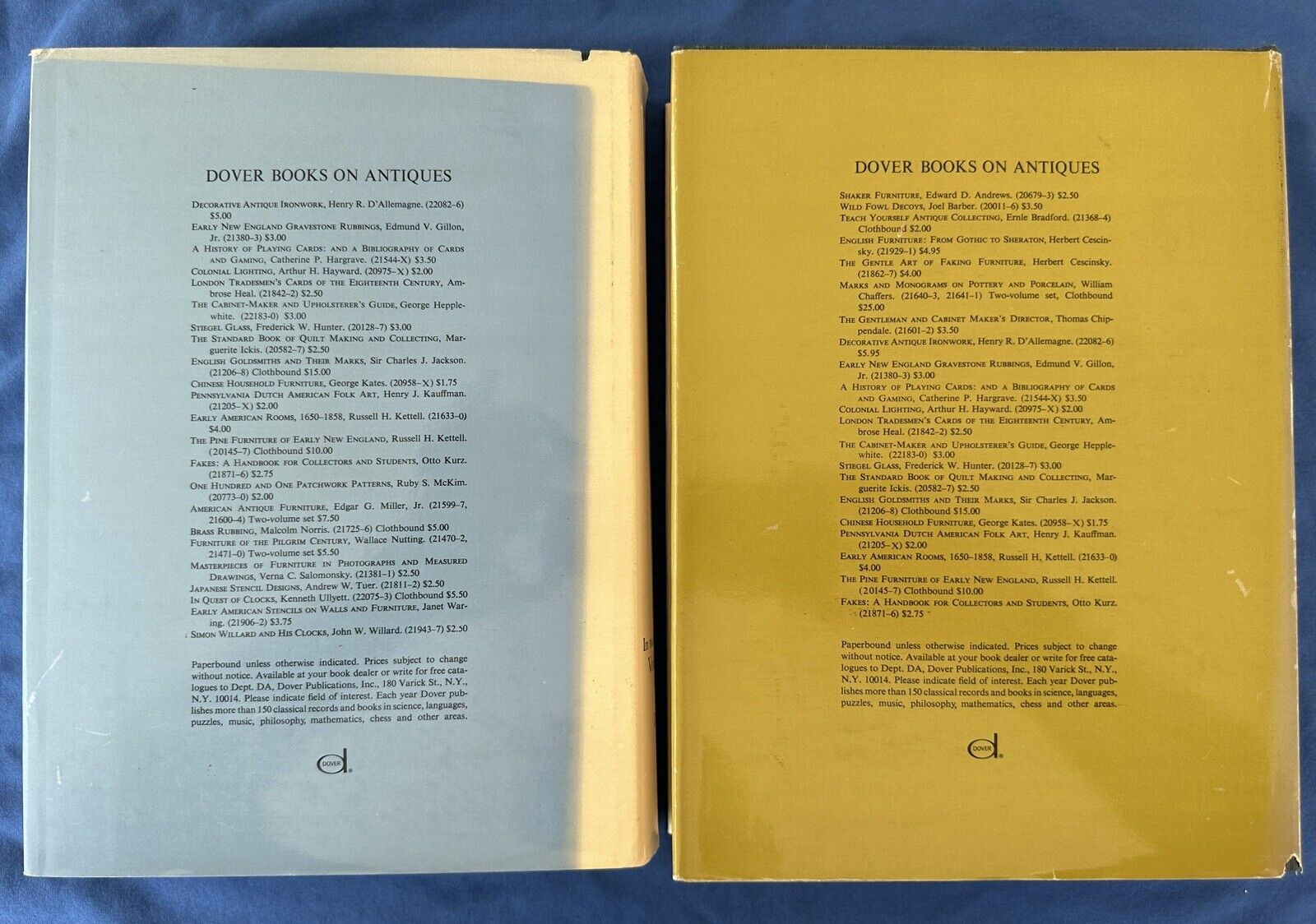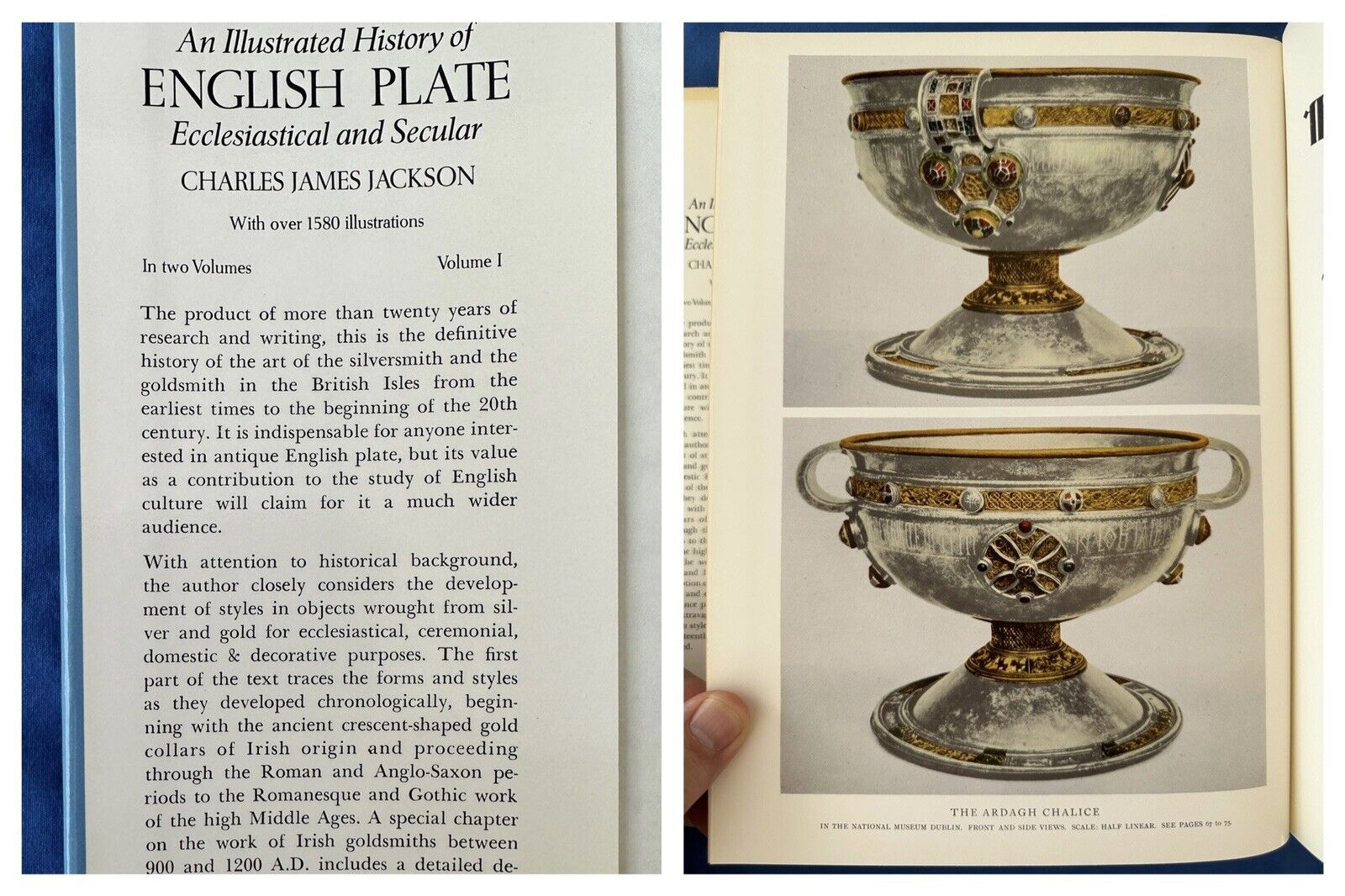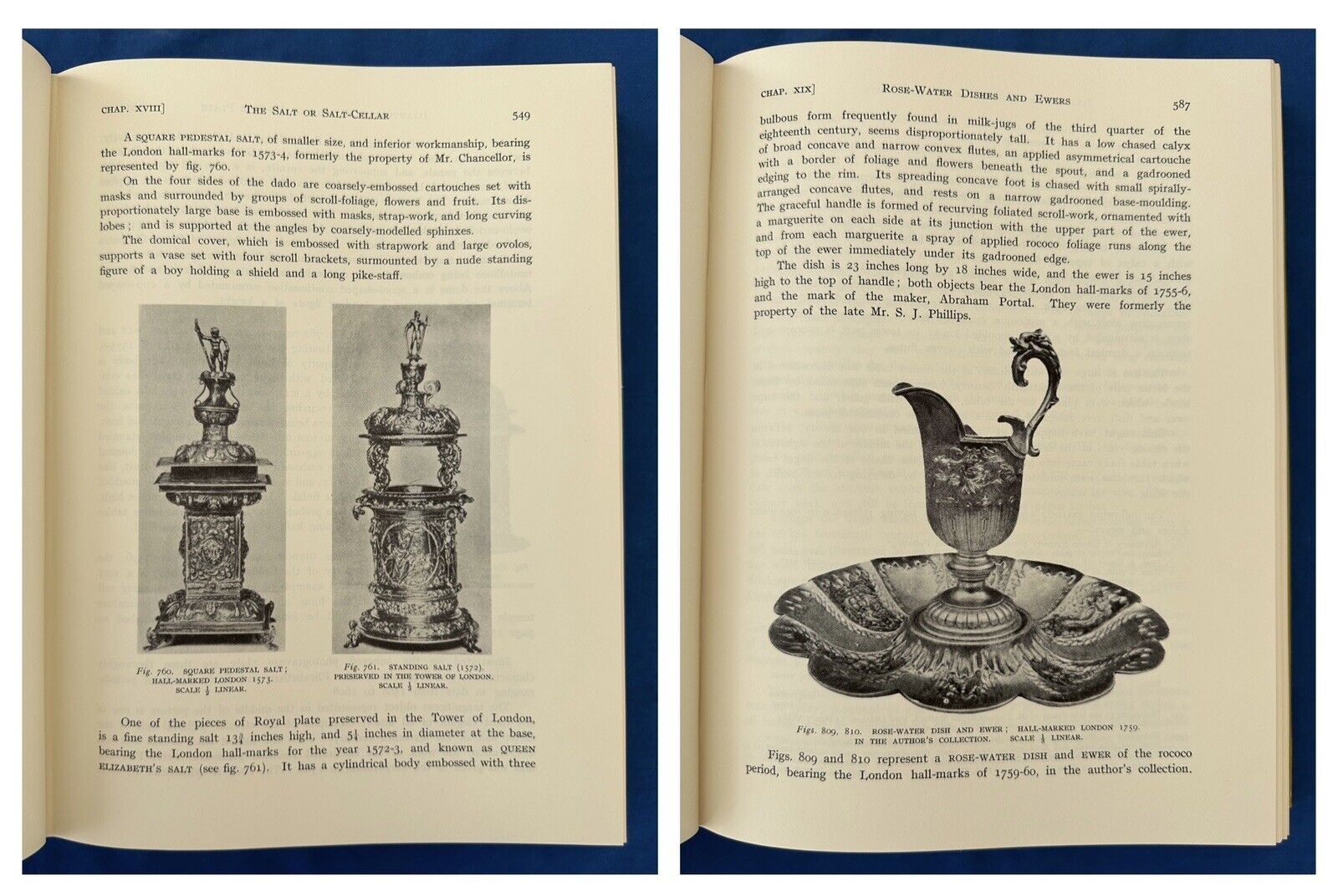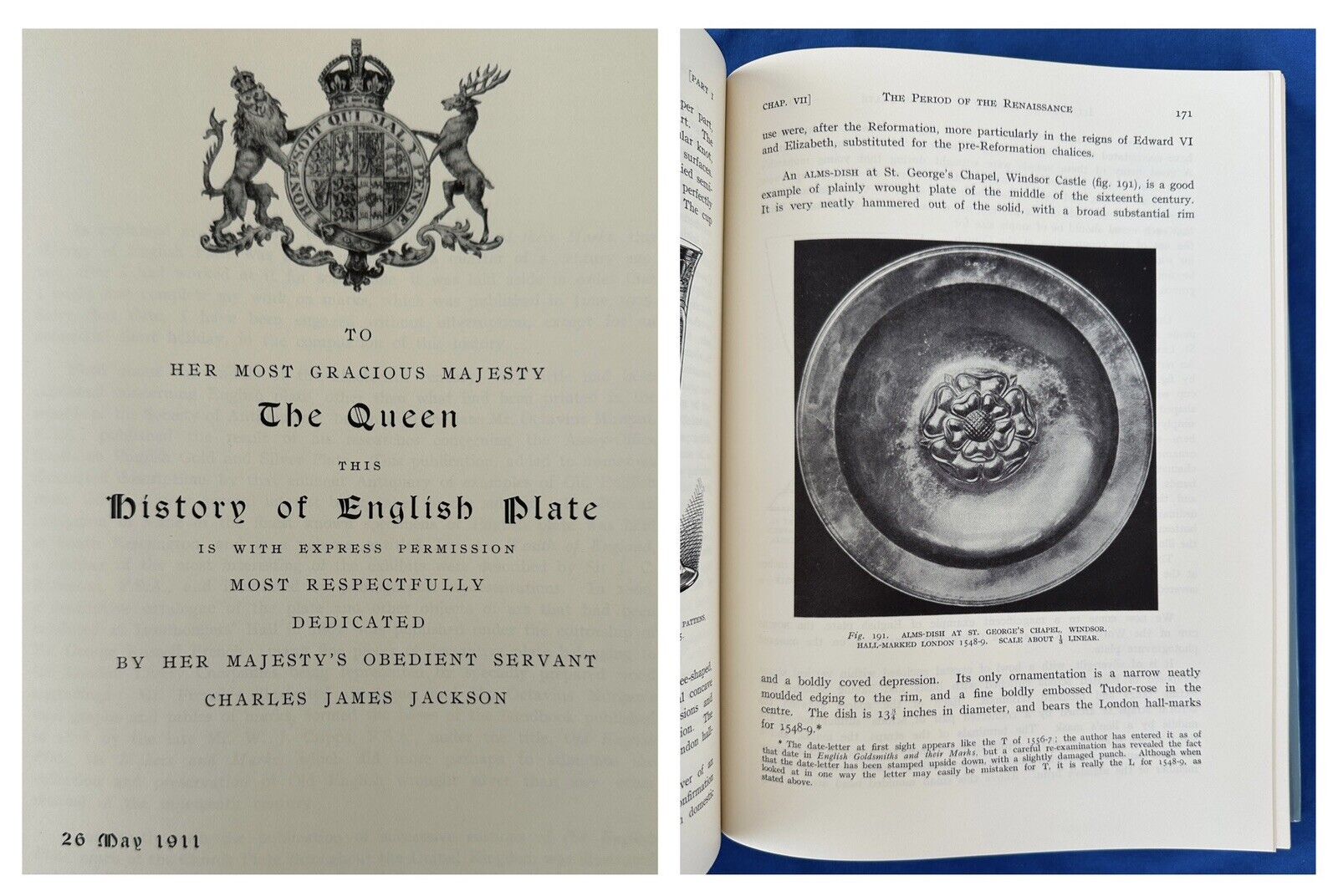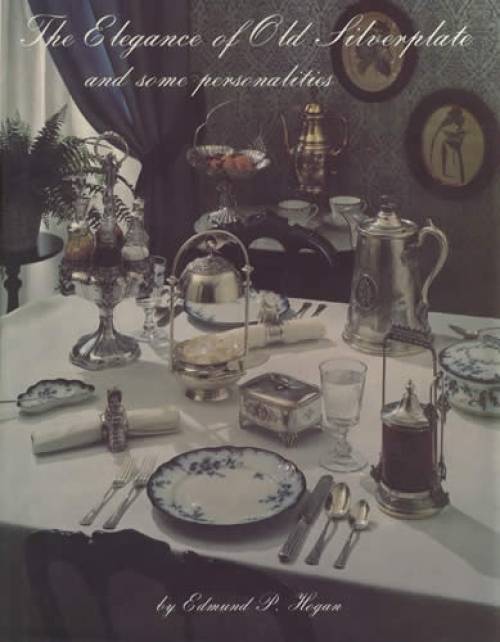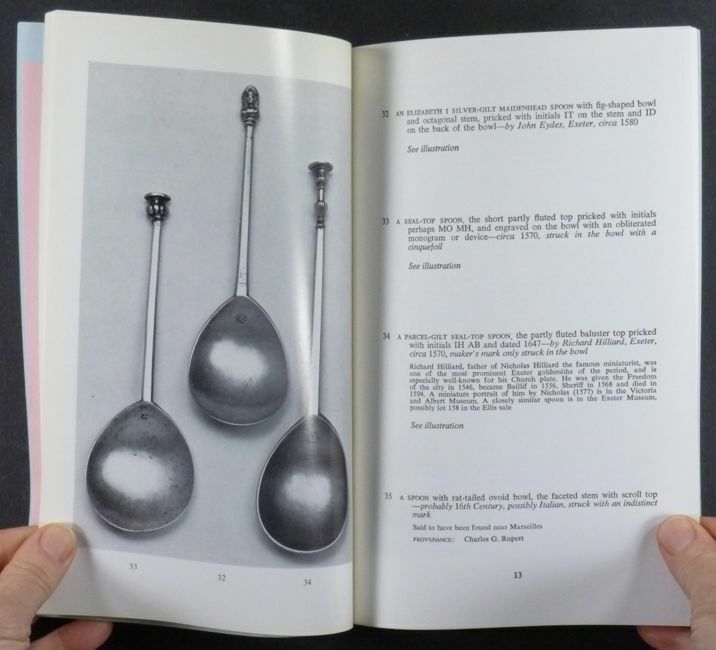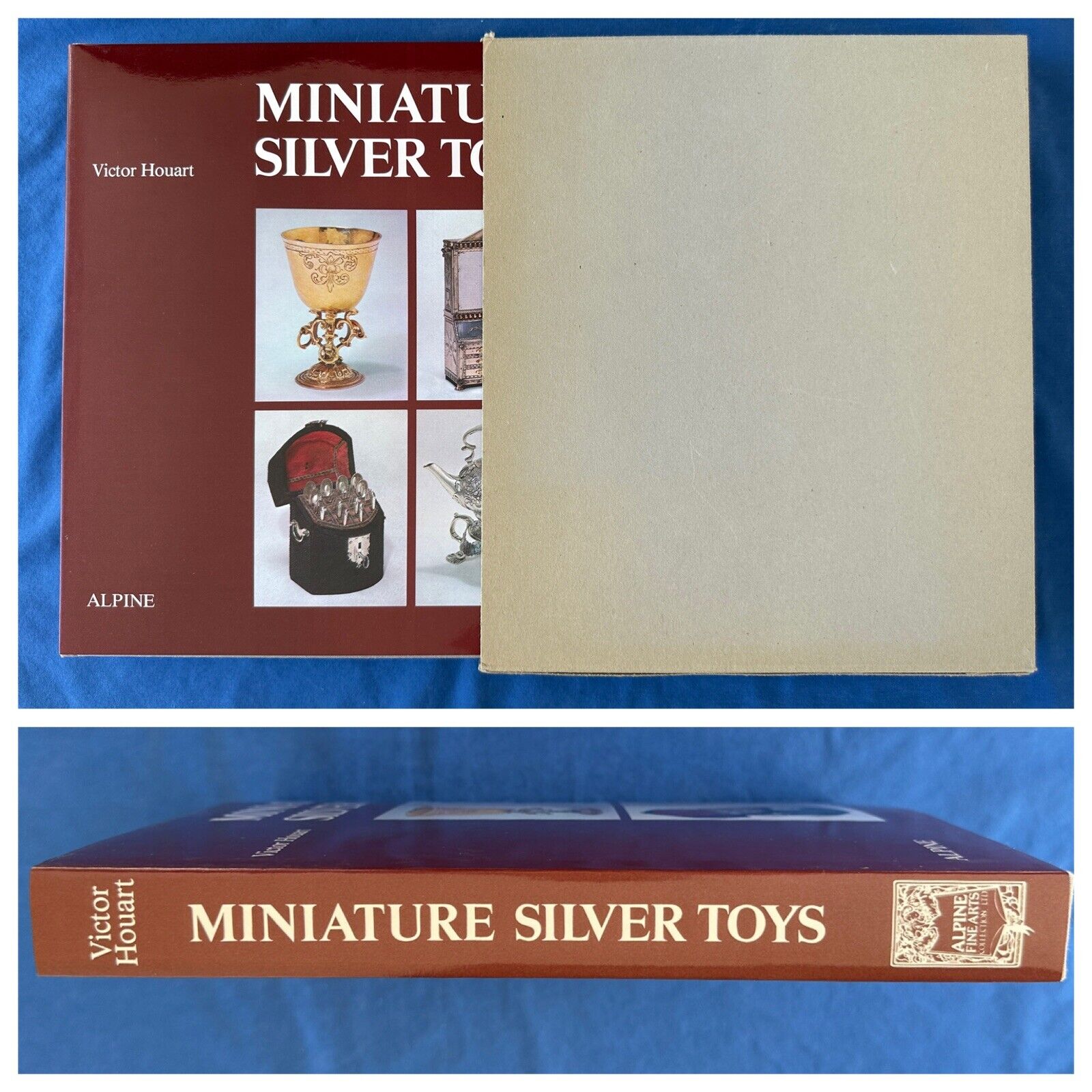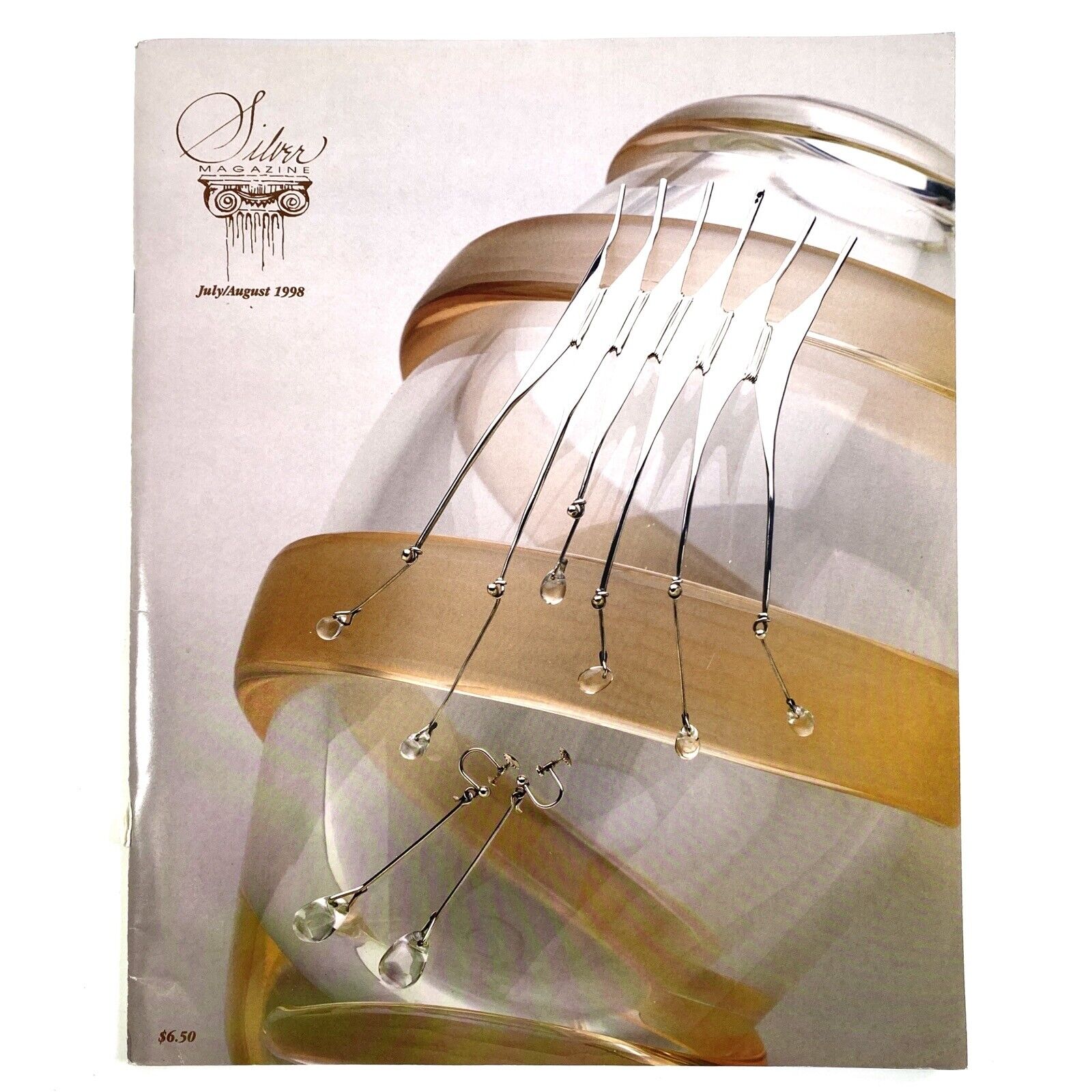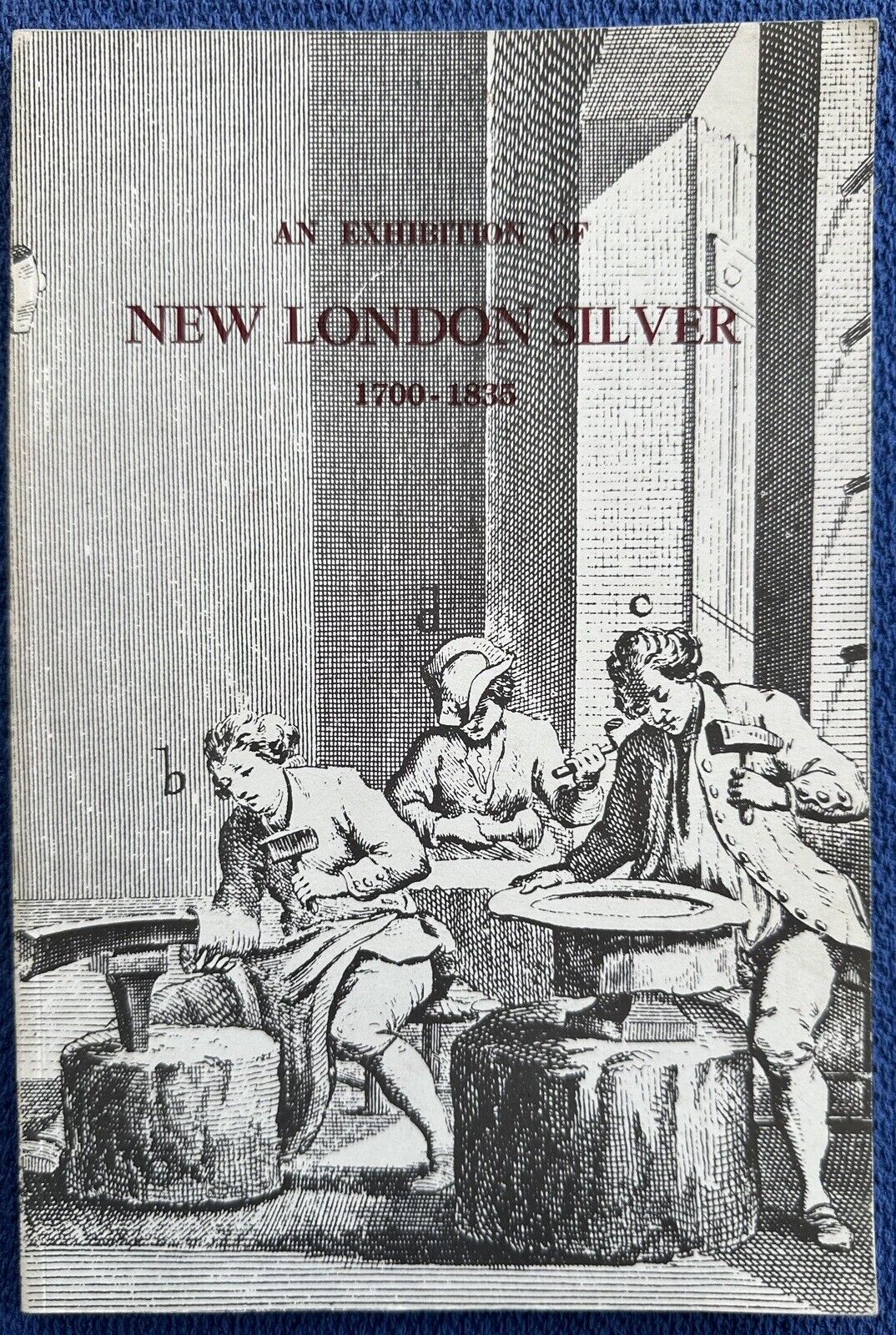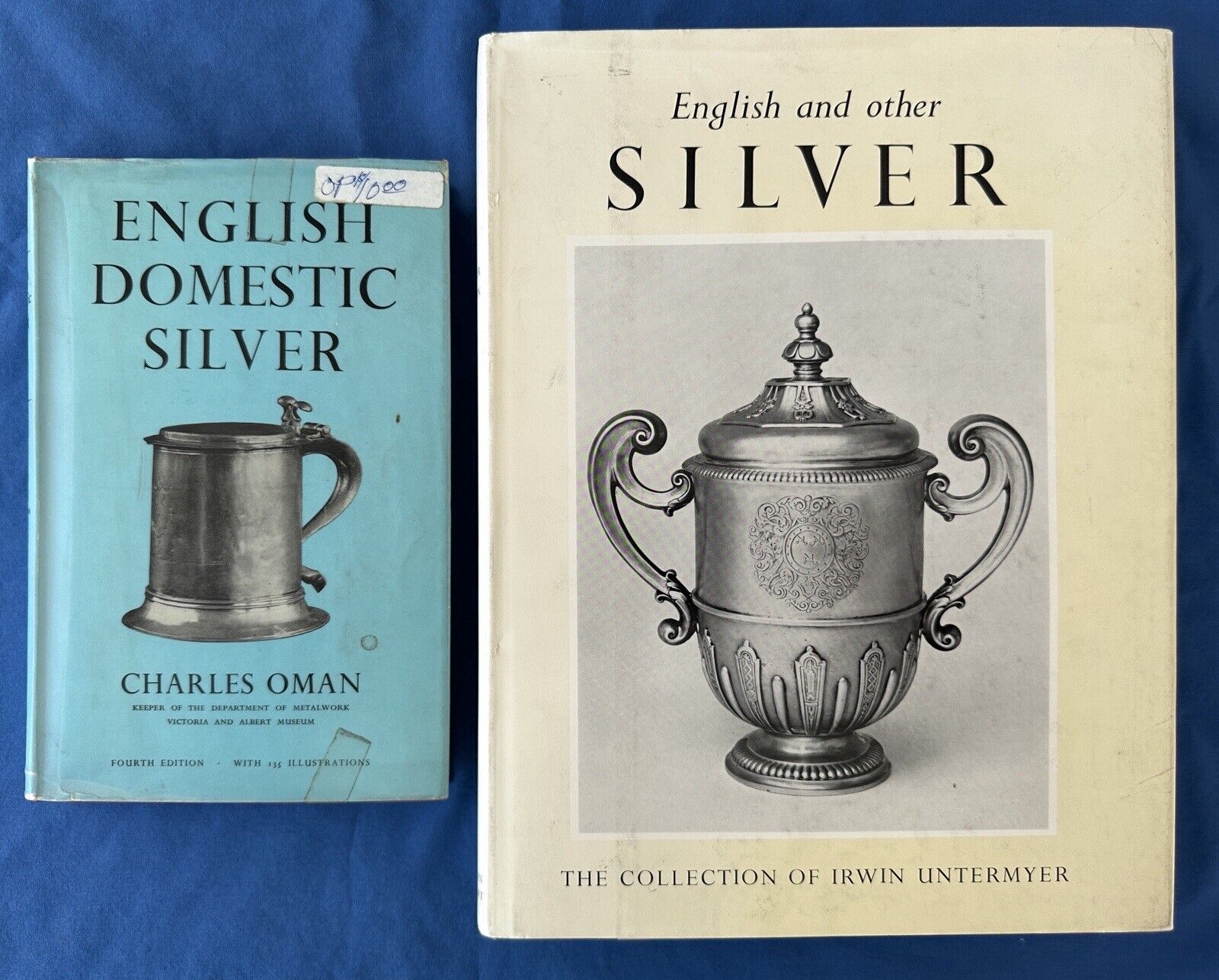-40%
Illustrated History English Plate Ecclesiastical & Secular Silver Sterling Book
$ 15.83
- Description
- Size Guide
Description
This listing is for the 2-volume set of hardcover books "An Illustrated History of English Plate Ecclesiastical & Secular" by Charles James Jackson. Together, these 2 books weigh over 9 pounds. Each book measures 8 1/2" x 11 1/4". Combined these 2 volumes have 1,085 pages.These 2 volumes cover British and Irish silver as well as Roman silver made during the occupation of Britain. There are 100's of illustrations.
This is the 1969 reprint of the original 1911 publication.
The books themselves are in excellent condition and appear to have been lightly used. The dust jackets have some light shelf wear and a few small tears as well as some fading on the spine of one of them.
Please see the photos for more detail. Money-back guarantee.
From the dust jacket:
The product of more than 20 years of research and writing, this is the definitive history of the art of the silversmith and the goldsmith in the British Isles from the earliest times to the beginning of the 20th century. It is indispensable for anyone interested in antique English plate, but its value as a contribution to the study of English culture will claim for it a much wider audience.
With attention to historical background, the author closely considers the development of styles in objects wrought from silver and gold for ecclesiastical, ceremonial, domestic & decorative purposes.
The first part of the text traces the forms and styles as they developed chronologically, beginning with the ancient crescent-shaped gold collars of Irish origin and proceeding through the Roman and Anglo-Saxon periods to the Romanesque and Gothic work of the high Middle Ages.
A special chapter on the work of Irish goldsmiths between 900 and 1200 A.D. includes a detailed description of the Ardagh chalice. The mould-ings and enrichment characteristic of Renaissance plate and the resulting alternation of extravagant ornamentation and relatively plain styles throughout the 17th and 18th centuries are described and illustrated.
